 In late June of 2003 I received one of the more unusual requests of my professional life — an invitation to deliver the keynote address to the Lifestyles Convention 2003 at the Aladdin Hotel & Casino, Las Vegas, Nevada, coming up shortly on August 8, 2003.
In late June of 2003 I received one of the more unusual requests of my professional life — an invitation to deliver the keynote address to the Lifestyles Convention 2003 at the Aladdin Hotel & Casino, Las Vegas, Nevada, coming up shortly on August 8, 2003.
The invitation came my way because, in conjunction with this convention, the Aladdin would also house “XART, the 13th Annual Sensual & Erotic Art Exhibition,” curated by Luis and Theresa De La Cruz of the XART Gallery and Foundation, which would incorporate both “Eroto: To the Prurient Interest,” a 200-print retrospective by photographer/filmmaker R. C. Hörsch, and a survey of recent erotic work in various media, photography among them. Hörsch, for whose featured project I’d written an introduction, had recommended me to them. And, because over the decades I’ve written extensively about erotic photography (more so than any of my colleagues), they were already familiar with my work.
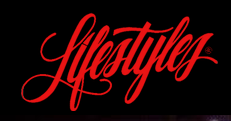 I gathered from the brief description provided in Luis and Theresa’s email, and the event’s title, that the attendees represented alternative sexual lifestyles. I assumed that covered the sexual spectrum, from vanilla to tutti-frutti, all gender persuasions; and, as I find that a comfortable environment, I didn’t give it any more thought. Only when I got there did I discover that this particular event’s demographic consisted exclusively of married heterosexual swingers who swap partners only with other married couples. Not that I’d anticipated anything happening for me in that environment, but it definitely made me a fish out of water.
I gathered from the brief description provided in Luis and Theresa’s email, and the event’s title, that the attendees represented alternative sexual lifestyles. I assumed that covered the sexual spectrum, from vanilla to tutti-frutti, all gender persuasions; and, as I find that a comfortable environment, I didn’t give it any more thought. Only when I got there did I discover that this particular event’s demographic consisted exclusively of married heterosexual swingers who swap partners only with other married couples. Not that I’d anticipated anything happening for me in that environment, but it definitely made me a fish out of water.
Nonetheless, I enjoyed the company, the festivities, and Vegas, that most Usonian of all cities, and used the lecture occasion as best I could. This is the complete text of the talk I delivered, in two parts. It seems even more relevant to the situation today than it did eleven years ago. — A. D. C.
•
Mainstreaming the Sexual Underground
Good afternoon. Before I begin, I’d like to thank Dr. Robert McGinley of LSO, Ltd./The Lifestyles Organization, and Luis and Theresa De La Cruz of the Sensual & Erotic Art Exhibition, for inviting me to speak today. I’m happy to be here among you. Long may the Lifestyles Convention and the Sensual & Erotic Art Exhibition thrive — and may the tribe that it brings together increase.
Speaking of tribes, you’ll note that I’m dressed mostly in black. You may not know this, but the New York City Chamber of Commerce requires all of us in the New York art world to wear black when we do public presentations out of town — it’s a branding and promo concept. Frankly, it can get a bit boring, but I accept it as a citizenly duty. Fortunately, in this case I get to wear black in a context where it has other, more intriguing connotations.
•
Last winter I attended a panel discussion on the future of photography at the New School for Social Research in Manhattan. One of the panelists was Richard B. Woodward, who writes feature stories on photography for the New York Times. Somewhere along the line, he volunteered the proposition that at present no one seemed to be doing photography that addressed the subject of sex. Then, having noted my presence in the audience, he unexpectedly asked if I agreed.
I told him that he needed to get out more.
I decided not to embarrass him further, but clearly my colleague was clueless on this subject. As a photography critic, I’ve written about erotic photography — which I’ll define broadly here as photography that directly addresses human sexuality in one way or another — since the late 1960s. I’ve published many reviews of books and exhibitions of erotic photography. I’ve reported on and editorialized about numerous censorship cases. I’ve covered trials involving sexual imagery, and have provided depositions and even served as expert witness in some. I curated an exhibition of erotic photography in the 1970s.
I’ve written introductions to a number of books of photographs about sex, including — in the past five years alone — monographs by Gilles Berquet, Tony Ward, Charles Gatewood, Barbara Nitke, Steven Speliotis, Hans Neleman, and, most recently, R. C. Hörsch. I provided the foreword to David Steinberg’s new anthology, Photo Sex, which offers an extensive cross-section of current work in this form. And I’ve actually appeared in a few erotic photographs myself, both privately circulated and published and exhibited.
So, unlike my colleague from the Times, I not only know something is happening here but I do know what it is. This is the dawn of what any thoughtful observer would have to consider a golden age of erotic art in general and erotic photography in particular. Perhaps it’s the first golden age, if by “golden age” we mean a period in which such work not only flourishes in terms of its production but also finds a wide international audience, circulates comparatively freely via public display and over-the-counter distribution, hasvocal supporters in positions of influence, and enjoys substantial if not consistent protection within the legal system.
As I’ve argued elsewhere, the necessary corollary of freedom of speech must be what I call “freedom of vision”: the right to communicate through visual media the same broad range of ideas that we can transmit through speech and print, the right to express and receive explicit commentary on sexuality without any limitations — or at least with no restraints that don’t also apply to the written and spoken word.
It’s a measure of how far we’ve come that someone I think we would all consider one of us — the New York-based BDSM photographer Barbara Nitke, whose first monograph, Kiss of Fire, has just appeared — has filed a landmark suit against our current U.S. Attorney General and the Department of Justice. I’m honored to have been invited to serve as an expert witness in this case, and particularly pleased that, for the first time, I’ll perform that service on the side of the plaintiff. High time we went on the offensive — and the fact that this has happened at last tells me that the sexual-photography movement has finally reached critical mass. (For a synopsis of this case, Nitke et. al. v. Ashcroft, click here. For a links list of relevant resources, click here.)
I don’t expect this specific case — or the larger struggle in which it’s a single (if important) battle — to be easily won. To call this a country of contradictions has always meant putting it mildly.
Consider that, as I speak, a Republican Party dominated by Christian fundamentalists has begun to put in place unprecedented surveillance of the general population, intensified censorship systems, and judicial appointments that promise to return us to the laws and mores of the nineteenth century. Yet, at the very same time, increasingly large segments of the citizenry engage both privately and openly in libidinal explorations, including those that David Steinberg calls “photo sex.”
This means not only that people here in the United States manifest a wide variety of sexual behaviors, but also that they pursue in growing numbers what I call the photo-erotic. By photo-erotic I mean the specific act of putting erotic behaviors on the visual record, playing them out in front of a lensed instrument loaded with light-sensitive materials or digital sensors, registering on film or in pixels our erotic inclinations — not just for our private delectation but also for wide distribution, so that complete strangers in another time and place can ponder, savor, and on a certain level partake in our most tender and intimate depravities. I also mean the act of photographing such activity, not only for one’s own enjoyment and the photographer’s, but as a communication intended for an audience. And the act of looking at those images, as you’re doing here at this convention.
It seems especially important to state that the photography of which I speak is not restricted to formal nude studies and elaborately staged but fictional sexual scenarios. It includes photographs of everyday people — not hired models or professional sex workers — engaged in real sex, pictures made by photographers intent on describing the ways in which we live our quotidian sexual lives, images of people who feel entitled to allow photographers the privilege of observing such intimacies. The fact that there’s so much work like this produced nowadays is one significant facet of this tendency’s underlying message. You’ll find an extensive retrospective of one artist’s output in the R. C. Hörsch exhibit featured here, and a sampling of the work of other photographers in the group show.
As the flood of material exhibited and published recently indicates, engaging in photo sex is not limited to any specific part of this country, or of the world. The photographers and their subjects come from all over. Nor are either the photographers or their subjects drawn from a particular race, or gender, or gender preference, or sexual inclination, or body type, or social class. Older people, hefty people, skinny people, people with disabilities — these and more mingle in this accumulation of photographs, linked principally by their acknowledgment of their sexuality as central to their lives and by their participation in these acts of photo sex.
(Part 1 I 2)



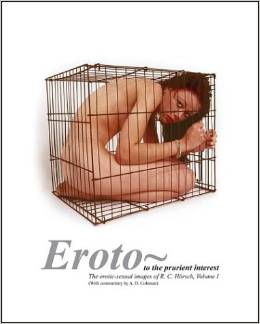
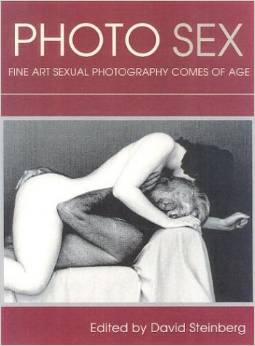
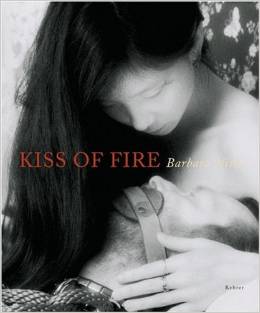
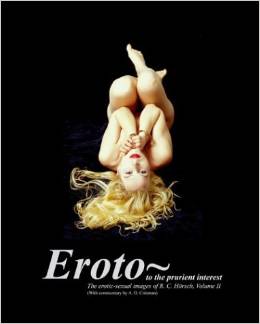




Hi Allan,
Delightfully surprised to see myself show up in your blog like this. I didn’t know about your speech to Lifestyles back then. Look forward to seeing Part 2.
David
“… he needed to get out more” — how do they get these jobs or even speak at a panel? Woodward should spend a night with me, or do the right thing and step aside, I hear Dunkin’ Donuts is hiring.
Best to you, JPN
Keep in mind that Woodward said this back sometime in winter 2002-03. Maybe he’s wised up since.